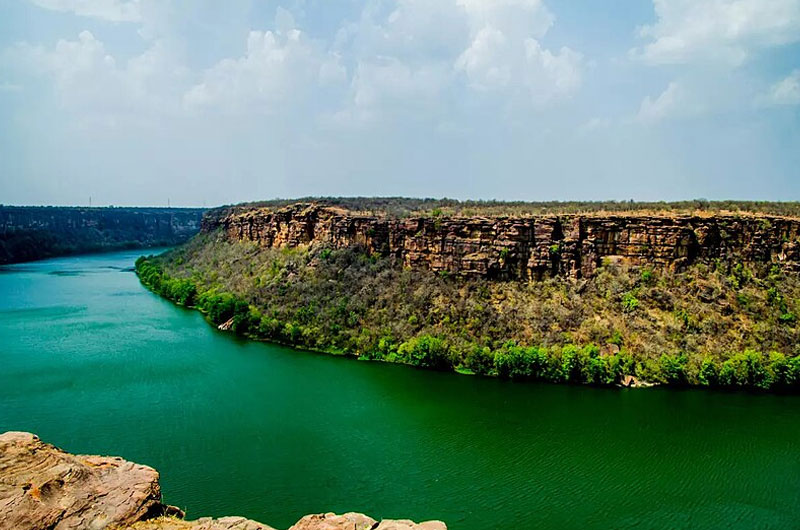
The Chambal River: A Majestic Waterway of Northern India
The Chambal River, a significant tributary of the Yamuna, flows through the heart of Northern India, traversing the states of Madhya Pradesh, Rajasthan, and Uttar Pradesh. Known for its picturesque landscapes, rich biodiversity, and historical significance, the Chambal River has long been a vital water source for the regions it touches. Its serene beauty, coupled with its unique role in local agriculture and ecology, makes it a noteworthy destination for tourists seeking both natural splendor and cultural experiences. This comprehensive guide provides an in-depth look at the Chambal River, highlighting its tourism specialty, locality, nearby tourist spots, history, best time to visit, and practical travel information.
1. Overview of the Chambal River
1.1 Geographic Location and Course
- Origin: The Chambal River originates from the Vindhya Range in Madhya Pradesh, India.
- Course: It flows northwestward through Madhya Pradesh, forms a border between Madhya Pradesh and Rajasthan, and then flows into Uttar Pradesh. The river eventually merges with the Yamuna River near the town of Kachnar.
- Length: The Chambal River extends approximately 960 kilometers (600 miles), making it one of the major rivers of Northern India.
1.2 Importance and Significance
- Economic Impact: The river plays a crucial role in agriculture through irrigation and provides water for various rural and urban needs in the regions it traverses.
- Environmental Impact: The Chambal River supports a diverse range of ecosystems and wildlife, including the critically endangered gharial and the Chambal river dolphin.
2. Tourism Specialty
2.1 Scenic Beauty
- River Cruises and Boat Rides: The Chambal River offers serene boat rides, especially in the Chambal River Sanctuary, allowing tourists to enjoy its tranquil waters and lush surroundings.
- Natural Landscapes: The river’s landscape is characterized by rocky gorges, sandbanks, and lush vegetation, providing breathtaking views and excellent opportunities for nature photography.
2.2 Wildlife and Conservation
- Chambal River Sanctuary: The sanctuary, spanning across three states, is home to a variety of wildlife, including the gharial, mugger crocodile, and various species of birds. It is a key destination for wildlife enthusiasts and conservationists.
- Gharial Breeding Center: Located within the sanctuary, this center focuses on the conservation and breeding of the endangered gharial, offering educational tours and insights into the conservation efforts.
2.3 Cultural and Historical Experiences
- Historical Sites: The Chambal River region is dotted with historical forts and ruins, such as the Chaurasi Khamba Temple and various ancient structures along the riverbanks.
- Local Festivals and Traditions: The river and its surroundings host local festivals that reflect the cultural heritage of the region, including traditional music, dance, and rituals.
3. Locality and Major Cities
3.1 Key Cities Along the Chambal
- Kota: A major city in Rajasthan, situated on the banks of the Chambal River, known for its historical and educational institutions.
- Chambal: A town in Madhya Pradesh, serving as a gateway to the Chambal River Sanctuary.
- Agra: Although not directly on the Chambal, Agra is relatively close and a popular destination for those exploring the river and its surrounding areas.
3.2 Nearby Tourist Spots
- Kota:
- Kota Garh: An ancient fort offering historical insights and panoramic views of the city.
- Seven Wonders Park: A park featuring replicas of the world’s seven wonders, including the Taj Mahal.
- Chambal:
- Chambal River Sanctuary: Offers boat safaris and wildlife viewing, including the endangered gharial and Chambal river dolphin.
- Gharial Breeding Center: Focuses on the conservation of the gharial and provides educational tours.
- Agra:
- Taj Mahal: The world-famous monument of love, renowned for its stunning Mughal architecture.
- Agra Fort: A UNESCO World Heritage Site showcasing the grandeur of Mughal architecture and history.
4. History of the Chambal River
4.1 Ancient and Medieval Significance
- Historical References: The Chambal River has been mentioned in ancient texts and chronicles, highlighting its role in regional trade and agriculture.
- Mythological Connections: The river is associated with various local legends and mythological stories, reflecting its cultural importance in the region.
4.2 Colonial and Modern History
- British Era: During the British colonial period, the Chambal River was crucial for irrigation projects and flood management in the region. The British implemented several measures to control its flow and support agriculture.
- Post-Independence: In modern times, the river has continued to be an essential resource for agriculture and water supply, while also becoming a focus for wildlife conservation and tourism.
5. Best Time to Visit
5.1 Ideal Seasons
- Winter (November to February): The weather is cool and pleasant, making it an ideal time for exploring the river and its surroundings. This season is perfect for wildlife viewing, boat rides, and sightseeing.
- Summer (March to June): Temperatures can be high, but early mornings and late evenings offer comfortable conditions for travel and exploration. The river’s flow may be reduced, affecting wildlife sightings.
- Monsoon (July to October): The river experiences increased flow during the monsoon season, which can lead to flooding. While the river is at its most dynamic, travel may be challenging due to heavy rains and high water levels.
5.2 Special Events
- Local Festivals: Various local festivals and cultural events are held in the Chambal River region, offering a chance to experience traditional music, dance, and rituals.
6. Nearby Restaurants and Hotels
6.1 Kota:
- Restaurants:
- Chambal Garden: Offers a variety of Indian and international dishes in a scenic garden setting.
- Hotel Kota: Known for its traditional Rajasthani cuisine and casual dining atmosphere.
- Hotels:
- Hotel Kota: A mid-range hotel with comfortable accommodations and good amenities.
- Hotel Suraj: Provides modern accommodations with excellent service and facilities.
- Budget Hotels:
- Hotel New Bharat: An economical option with basic facilities and a convenient location.
- Hotel Arjun: Offers budget-friendly accommodations with essential amenities.
6.2 Chambal:
- Restaurants:
- Chambal Safari Lodge Restaurant: Offers a range of local and international dishes in a scenic setting.
- Forest Rest House: Known for its simple yet delicious meals and tranquil environment.
- Hotels:
- Chambal Safari Lodge: Provides comfortable accommodations with a focus on eco-friendly practices and proximity to the Chambal River Sanctuary.
- Hotel Chambal: Offers mid-range accommodations with essential amenities and good service.
- Budget Hotels:
- Hotel Safari: An affordable option with basic amenities and a convenient location.
- Hotel Palace: Offers budget-friendly lodging with essential facilities and decent service.
6.3 Agra:
- Restaurants:
- Bamboo Tree: Known for its diverse menu and quality dining experience.
- Kachori Gali: Famous for its local delicacies and traditional cuisine.
- Hotels:
- Hotel Tajview: A mid-range hotel offering modern amenities and comfortable accommodations.
- Hotel Chanakya: Provides high-quality accommodations and excellent service.
- Budget Hotels:
- Hotel President: An economical option with essential facilities and decent service.
- Hotel Kautilya: Offers affordable accommodations with good service and basic amenities.
Conclusion
The Chambal River, with its rich natural and cultural heritage, offers a diverse range of experiences for travelers. From exploring the scenic beauty and wildlife of the Chambal River Sanctuary to discovering the historical and cultural sites along its banks, the river provides numerous opportunities for adventure, relaxation, and cultural enrichment. Its significance as a vital waterway and its role in supporting local ecosystems make it a fascinating destination for those interested in understanding the interplay between nature, culture, and history. Whether you are a nature enthusiast, a history buff, or simply seeking a peaceful retreat, the Chambal River promises a memorable and enriching experience.
